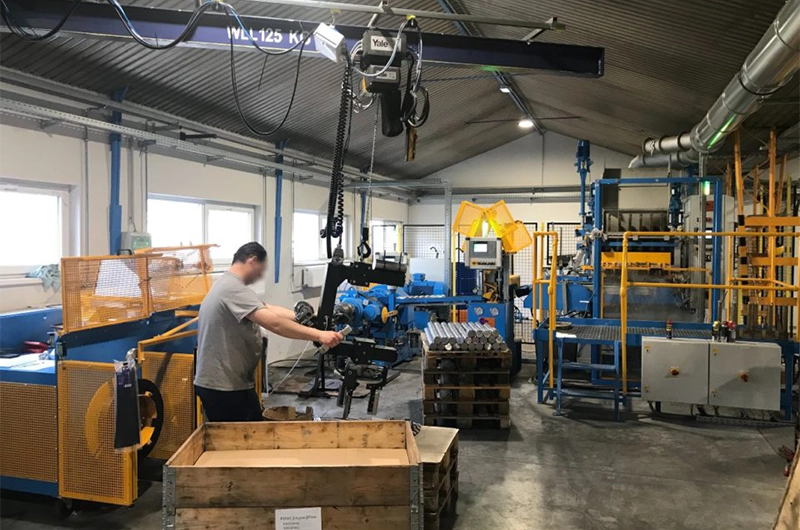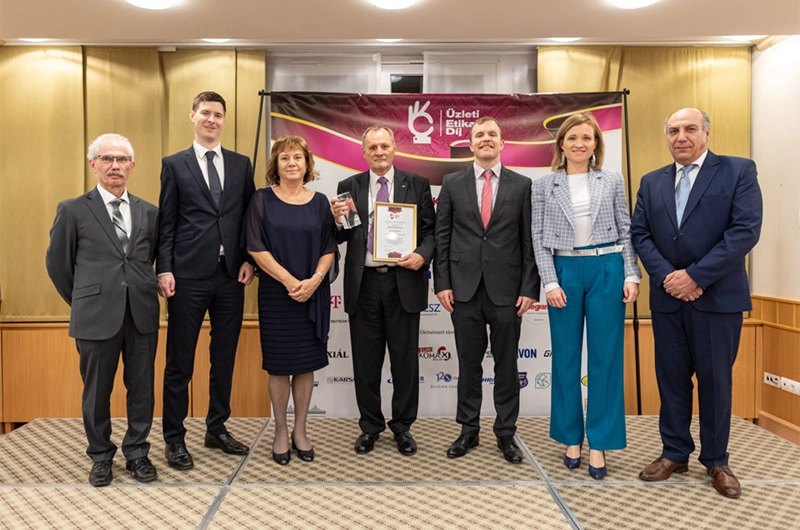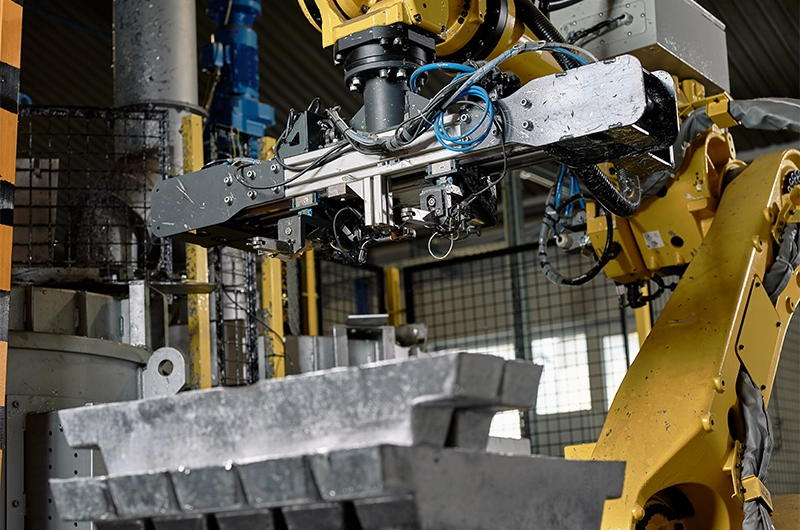From dream to realization
In the early spring of 2006, Mihály Vlaszák, managing director of Metalloglobus Fémöntő Kft., spent a sleepless night thinking about how to achieve such a spectacular performance related to the company's activities, which on the one hand enhances the company's reputation and on the other hand provides an unforgettable experience for the people involved.
Since he had long been interested in old toys, old traditional values, the idea (!) was born, the obvious solution: build the world's largest lead soldier!
The idea was followed by action. Careful research revealed that the record, dubbed "World's Greatest Lead Soldier," is already an existing achievement, and is listed in the Guinness Book of Records.
It is a 9-by-75-centimeter-tall monster in Montgomery, near Vancouver, Canada, and commemorates Andersen's famous lead soldier. Because all records can be broken, there is a size to surpass.
However, there is no one to solve this challenge. The originator believes that he should not achieve an above-average goal in an average way, i.e. reap success alone by investing an incredible amount of money, but create a community where everyone feels ownership of the goal and everyone wants to do something for joint success in this way. Since your company has a strong presence on the Hungarian metal market, there is plenty of potential help and support. In a conversation that starts out as normal, he brings up the idea to one of his old customers, János Vas, who makes souvenirs and pours metal. At first he likes the somewhat "crazy idea", and when he gets home to Dunaújváros, he tells the renowned sculptor and teacher of Széchenyi High School, István Rohonczi (ROHO), who responds as follows: "This is such a crazy idea that you have to do it!"
The three of them set out to settle the project both legally and on paper, creating a separate company (first called Leadkatona Kft, then Miskahuszár Kft.), which supervises and implements the project. Meanwhile, more help arrives, the first supporters appear next to the idea. The question, as is usual with any major initiative, is: "What will it be made of?" The first idea is to find supporters and offer them something in return. For this purpose, a miniature replica of the soldier is created, which would also receive the sponsor/sponsor advertising space and appearance as a gift. However, their basic ambition is not to move participants by the possibility of money and profit, but by the strength of the community, faith in the project, trust and volunteering, as they stated at the beginning.
In order for the Soldier to be made, plans, drawings, foundations are needed. Since Andersen's soldier is the symbol of love and the rival is based on it, the famous Hungarian hussar, the slimy Hungarian hussar, will be the model for the Hungarian record-breaking statue. For the time being, only plaster, but by the end of summer 2006 the first soldier will finally be finished as a one-meter-high sample. This hussar became not only the model for the later replicas, but also the basis and template for the future 12-meter giant soldier.
In the autumn of 2007, in the village of Rácalmás on the Danube, a local construction company, Timpanon P+P Kft. offered its site, the building that used to function as a riding hall, in order to obtain the 12.5 meter high shape of Miskahuszár from PUR foam here, so that the necessary works could be carried out here.
ROHO therefore "moved" to the Riding Hall in the winter of 2007 and started welding the iron parts of the frame together despite the cold. Even the laid pattern was impressive in size. But what this actually means was only revealed in the spring of the following year, when in March 2008 the statue finally "recovered".
The next significant day in the life of the hussar statue is the "baptism day", which can be found on June 28, 2008. At that time, as part of a local initiative, the Art-Porta Port of Arts festival, the statue took the name Miskahuszár. Hussars took part in the naming ceremony, a Scottish bagpipe asked for blessings for those present and for the success of the initiative, and then, in accordance with the tradition of baptism, a priest baptized the giant hussar and asked for a blessing on the success of the initiative.
- Film illustration: https://www.youtube.com/watch?v=FFCBeOhJY7o&t=259s
- Film illustration: https://www.youtube.com/watch?v=xNvYm6Jbow4&t=30s
- Film illustration: https://www.youtube.com/watch?v=GuNt5Yd__pk&t=11s
- Film illustration: https://www.youtube.com/watch?v=9N4F0tMnCAg&t=7s
10 years later...
At that time, members of the creative community were very optimistic about the completion of the statue. There was a hussar carved out of foam with its 12-meter tall, but there was no mature technology to shape it or the final location. Although the hussar statue was intended for Pákozd because of the victorious battle on September 29, 1848, the undying merit in finding the site belongs to Colonel Dr. István Német, head of the Military Memorial Park in Pákozd.
While examining several possible technologies, ROHO added a plaster surface to the sculpture. Since the design of the statue was completed before the final technology was developed and the ownership of the site was settled, Miska spent two winters in nylon foil.
In 2015, the final method of construction was finally born: the concrete sculpture poured into a concrete-based pattern. The operation was carried out by an enthusiastic team of ÖKO 2002 Kft. with excellent professional knowledge, headed by László Somfalvi. In the first phase, the sculpture pattern was formwork in a circle, and after applying a suitable mould release layer, it was poured with lightweight concrete. The amount of concrete was about 140 tons.

Then came the removal of the future casting samples using a tower crane. The 13 levels consisted of 2-3 segments per level. The harvested samples spent the winter in Rácalmás. By the spring of 2017, the pedestal of the statue was completed, the material of which was 110 tons of concrete and the associated reinforcements. The casting samples, weighing 7-11 tons each, were transported from Rácalmás to Pákozd by special vehicles. Here, level-by-level, proper reinforcement and pouring with concrete were carried out. The summer heat thoroughly tested the enthusiastic employees of ÖKO 2002 Ltd., while they also "unfolded" the statue of Miskahuszár from the captivity of the concrete sarcophagus, also going down by level.
The final cicoma, cleaning the surface of the sculpture and coating it with special paint awaited the artist, ROHO. Despite the sweltering heat, he created something great. Compared to the operations described so far, spatial planning and the creation of the environment were only minor things.
On September 29, 2017, the statue was waiting to be inaugurated with military honors, in the presence of an army of hussars and thousands of interested people, by General Tibor Benkő.
Metalloglobus Metal Casting Ltd. does not wish to deal with sculpture casting anymore, but is proud that it could contribute to the preservation of our national traditions within the framework of social responsibility. We hope that visitors to Miskahuszár will enjoy the sight of the statue and enjoy it just as much as their creators.








